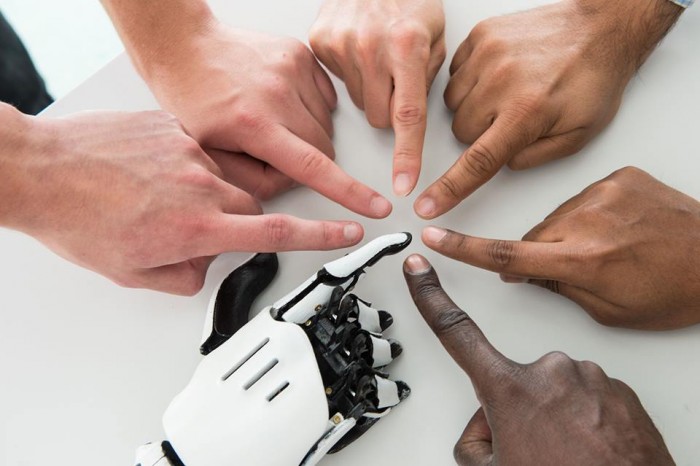
Researchers from the University of Glasgow have created a synthetic skin that could be used in both robotics and prosthetics. Dr Ravinder Dahiya and his team at the University’s school of engineering have already created a prosthetic hand capable of performing challenging tasks like properly gripping soft materials, which other prosthetics can struggle with. Now, they hope to create a touch sensitive, energy-autonomous prosthetic limb.
“Human skin is an incredibly complex system capable of detecting pressure, temperature and texture through an array of neural sensors which carry signals from the skin to the brain,” explains Dahiya.“My colleagues and I have already made significant steps in creating prosthetic prototypes which integrate synthetic skin and are capable of making very sensitive pressure measurements. Those measurements mean the prosthetic hand is capable of performing challenging tasks like properly gripping soft materials, which other prosthetics can struggle with. We are also using innovative 3D printing strategies to build more affordable sensitive prosthetic limbs, including the formation of a very active student club called Helping Hands.”
Dahiya and colleagues from his Bendable Electronics and Sensing Technologies (BEST) group have integrated power-generating photovoltaic cells into their electronic skin for the first time. The electronic skin is made of graphene, a highly flexible form of graphite which, despite being just a single atom thick, is stronger than steel, electrically conductive, and transparent. It is graphene’s optical transparency, which allows around 98 per cent of the light which strikes its surface to pass directly through it, which makes it ideal for gathering energy from the sun to generate power.
The new skin requires just 20 nanowatts of power per square centimetre. “The next step for us is to further develop the power-generation technology which underpins this research and use it to power the motors which drive the prosthetic hand itself. This could allow the creation of an entirely energy-autonomous prosthetic limb,” says Dahiya.
“We’ve already made some encouraging progress in this direction and we’re looking forward to presenting those results soon. We are also exploring the possibility of building on these exciting results to develop wearable systems for affordable healthcare. In this direction, recently we also got small funds from Scottish Funding Council.”






